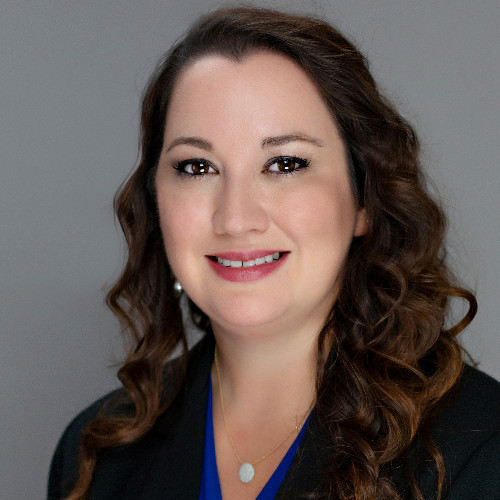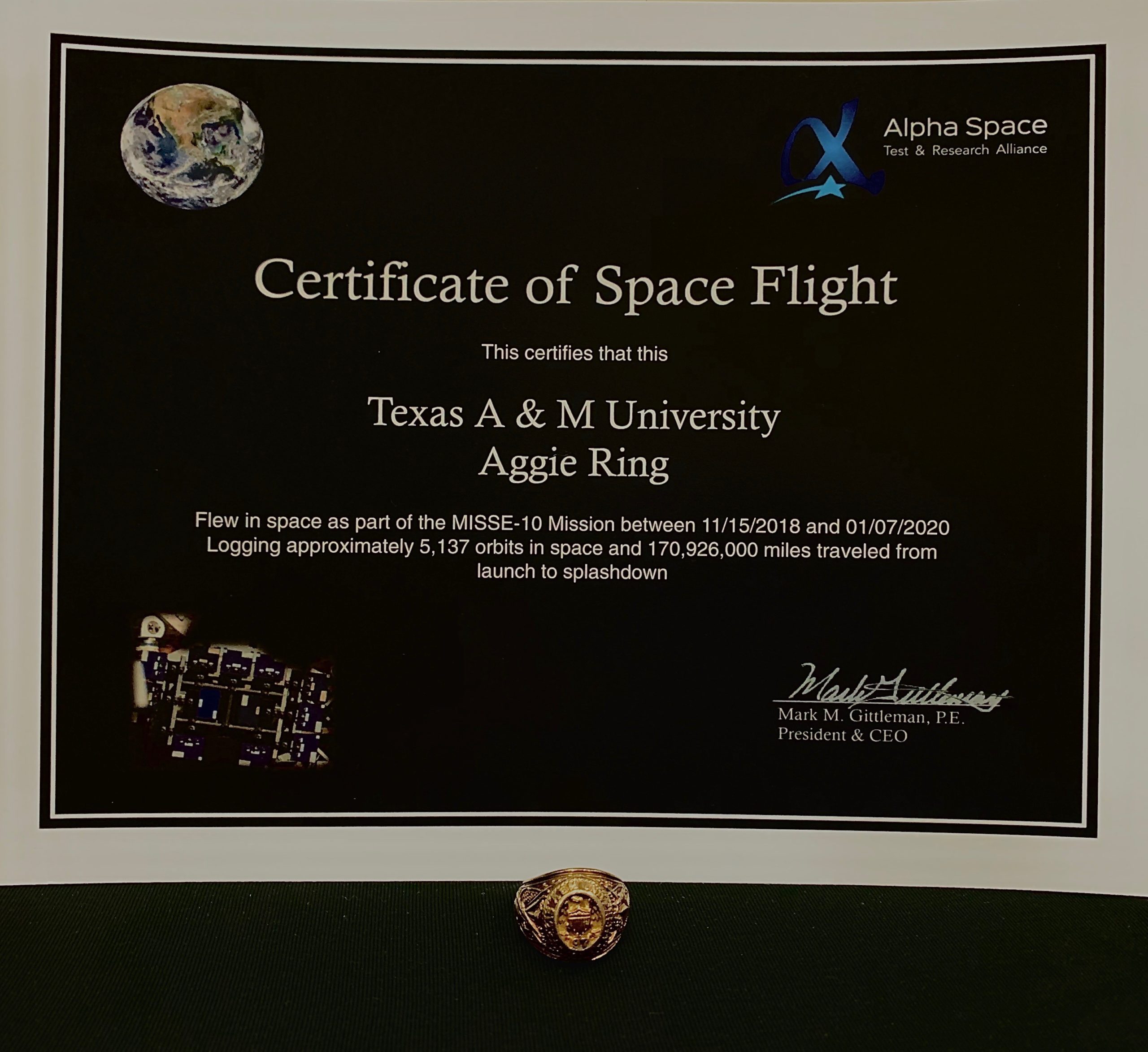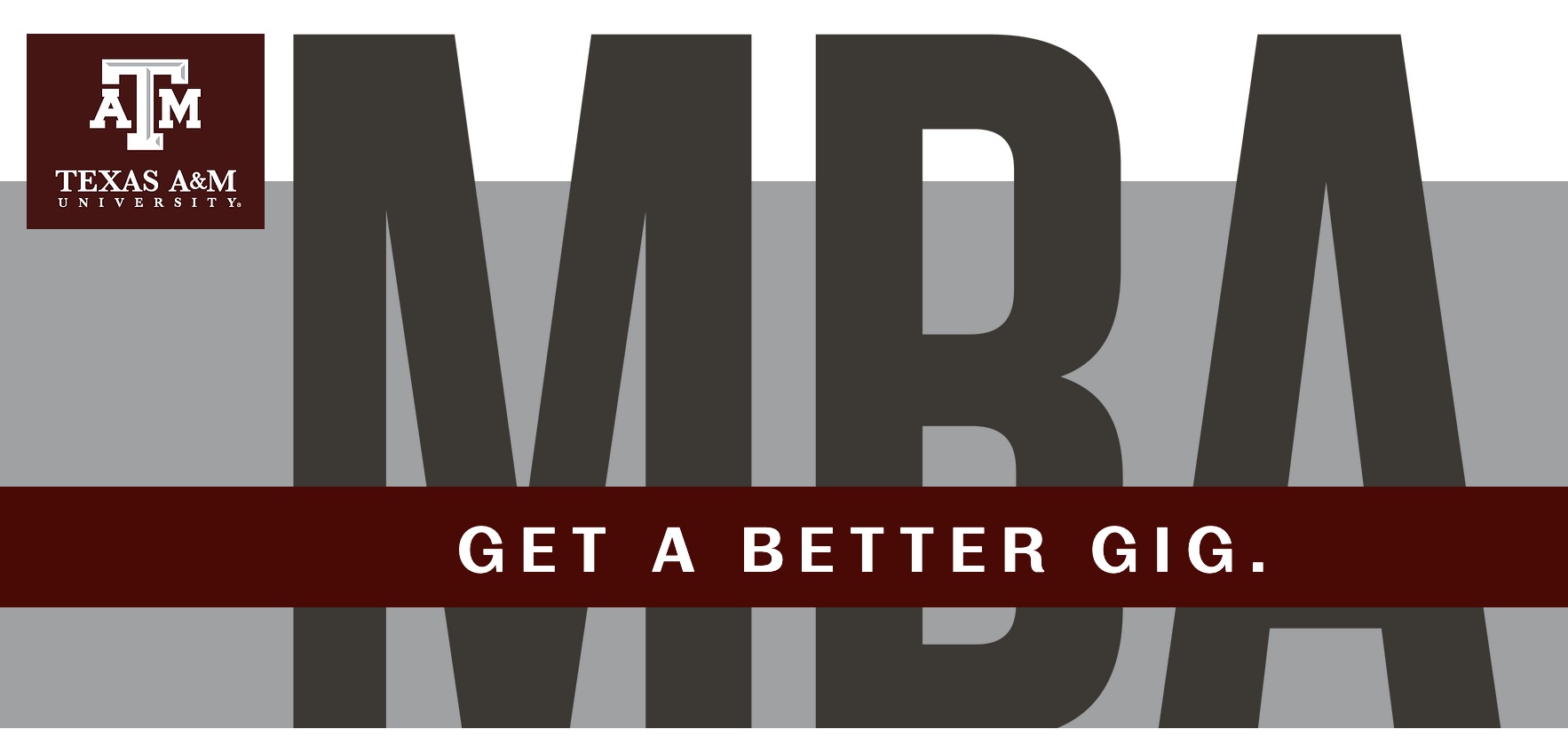Texas A&M Executive MBA Class XX Coin headed to Space Orbit and International Space Station
August 6, 2020
|
Mays Business School
#aMAYSing former student, Stephanie Murphy, Owner and Chairman at MEI Technologies, Inc. and Alpha Space Test and Research Alliance, LLC, recently shared some news with the EMBA Class of 2020 during their celebration ceremony…
First, get to know her:
 I received my undergrad in AgriBusiness from Texas A&M and then went on to work at MEI Technologies (then is was Muniz Engineering). My father founded MEIT in 1992, I began working there in 2001. Over the next ten years, I worked in various corporate departments and had taken on leadership roles within the company. We began succession planning for MEIT and I was interested in additional formal education (MBA) to help prepare me for my next roles within the company as an executive and an owner. I attended an Aggie 100 lunch with my father who was receiving an award, and Ricky Griffin happened to be a guest at our table. He was talking about the Executive MBA (EMBA) program and the new location at City Centre. I applied to the program and found it to be competitive with other programs and very convenient in terms of location and my work schedule.
I received my undergrad in AgriBusiness from Texas A&M and then went on to work at MEI Technologies (then is was Muniz Engineering). My father founded MEIT in 1992, I began working there in 2001. Over the next ten years, I worked in various corporate departments and had taken on leadership roles within the company. We began succession planning for MEIT and I was interested in additional formal education (MBA) to help prepare me for my next roles within the company as an executive and an owner. I attended an Aggie 100 lunch with my father who was receiving an award, and Ricky Griffin happened to be a guest at our table. He was talking about the Executive MBA (EMBA) program and the new location at City Centre. I applied to the program and found it to be competitive with other programs and very convenient in terms of location and my work schedule.
After graduating in 2014, I had an opportunity to take an idea developed at MEIT and launch a new business providing testing in the harsh environment of space as a service. In 2015 I founded Alpha Space Test and Research Alliance, and in 2018 we launched a testing platform that is permanently attached to the International Space Station. We privately own the facility, known as MISSE, and offer government agencies, academia, private companies, and now individuals access to the low earth orbit space environment. We are part of a small group of companies offering commercial services in space and at the forefront of developing a new space economy.
My EMBA prepared me for the launch (literally) of this new company not only through the academics, but also set a cadence of hard work and efficiency for me. I made great relationships and connections, and have gone on to participate and serve in other organizations as a direct result of the network I built during my time in the EMBA program.
Mays: How did the idea about sending the EMBA Class XX Coin come to gain traction?
 SM: I was meeting with Julie [Orzabal, Director, Texas A&M Executive MBA Program] and had expressed an interest in staying engaged with the EMBA program. We were chatting about the Class XX graduating and their program coming to an end. I shared with her that I sent my husband’s Aggie ring into space, and I commented to her how cool it would be to send their class coin, which typically travels around the world with students, on the ultimate trip into space. I committed to sponsor that trip for the Class XX coin, and Julie let me announce it to the class via Zoom on their last program day.
SM: I was meeting with Julie [Orzabal, Director, Texas A&M Executive MBA Program] and had expressed an interest in staying engaged with the EMBA program. We were chatting about the Class XX graduating and their program coming to an end. I shared with her that I sent my husband’s Aggie ring into space, and I commented to her how cool it would be to send their class coin, which typically travels around the world with students, on the ultimate trip into space. I committed to sponsor that trip for the Class XX coin, and Julie let me announce it to the class via Zoom on their last program day.
Mays: Can you detail exactly what will happen, as planned, for the EMBA Class XX Coin?
SM: The EMBA Class XX coin was delivered to our headquarters in Houston. It will be put into our vacuum chamber and the pressure will reduced to 10-6 torr (0.000000001 atmosphere) and the temperature will be raised to 60oC (140oF). This removes contaminants and particulates from the coin and prepares it for space flight. It is then moved into our 10K clean room, where our engineers integrate the coin into a MISSE carrier along with other experiments bound for the space station. Our carrier is packed and delivered to NASA Johnson Space Center, then shipped along with all the other cargo manifested on our flight to the International Space Station. NASA will ship the cargo to the launch site, either Florida for a SpaceX launch, or Virginia for a Northrup Grumman launch, and it will be packed for launch.
It will launch in spring 2021, where the coin will experience acceleration forces of about 3X to 4X gravity. Once docked to the ISS, the astronaut crew will unpack our carrier from the cargo. An astronaut attaches our carrier, containing the Class XX coin, to the MISSE transfer tray and send them through the airlock into space attached to the ISS robotic arm. The robotic arm and other robotic tools plug our carrier into the MISSE facility, which we will then control from our operations center here in Houston. The Class XX coin will be exposed to the harsh environment of space, including extreme temperature changes that can range from -40oC to 60oC (-40oF to 140oF), while it orbits the Earth approximately 16 times per day. At this point, the coin is traveling almost 5 miles per second and is about 240 miles above the Earth. We expect it to stay for about 6 months totaling over 75,000,000 miles on its trip in space.
At the end of this mission, the carrier is returned into the habitable portion of the space station by the robotic arm and the transfer tray. The astronauts load it, along with other cargo, for a ride back to Earth on the SpaceX Dragon capsule. Once retrieved by NASA, the carrier is returned to our office in Houston, where our engineers de-integrate and unpack the carriers. At that time, the coin will be returned to Class XX and happy hour to follow!
Mays: What’s next after the EMBA Class XX Coin?
SM: In 2019, we were the first company to sign a reimbursable Space Act Agreement with NASA to allow us to purchase resources from NASA (launch, astronaut time, etc) to send commercial items to the International Space Station. This allows us to open space access to private individuals, not just researchers, for personal use. In 2021, we will be selling space for Aggie Rings and other personal mementos to fly in one of our carriers just like the Class XX coin. For about the price of an airline ticket for international travel, an Aggie ring can complete a mission to the space station and return to its owner.
Mays: Why is this special and important to you – and why you think it’ll be special for others?
SM: Sending an item into the space environment and having it returned is such a unique experience that has been limited to very select scientists. We have the opportunity to enable that experience for private companies, organizations, and individuals on a limited basis for the first time in the history of space exploration. I think it’s amazing that one could send their Aggie Ring, which connects Aggies instantly and represents Aggie values, on a unique mission into space. The eagle on the ring symbolizes agility, power, and the ability to reach great heights, and what better way to celebrate that than by sending it beyond the sky?




